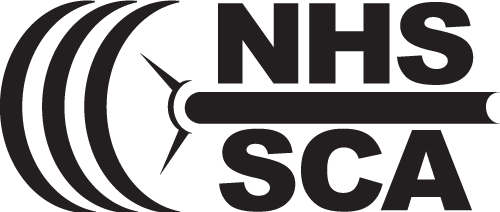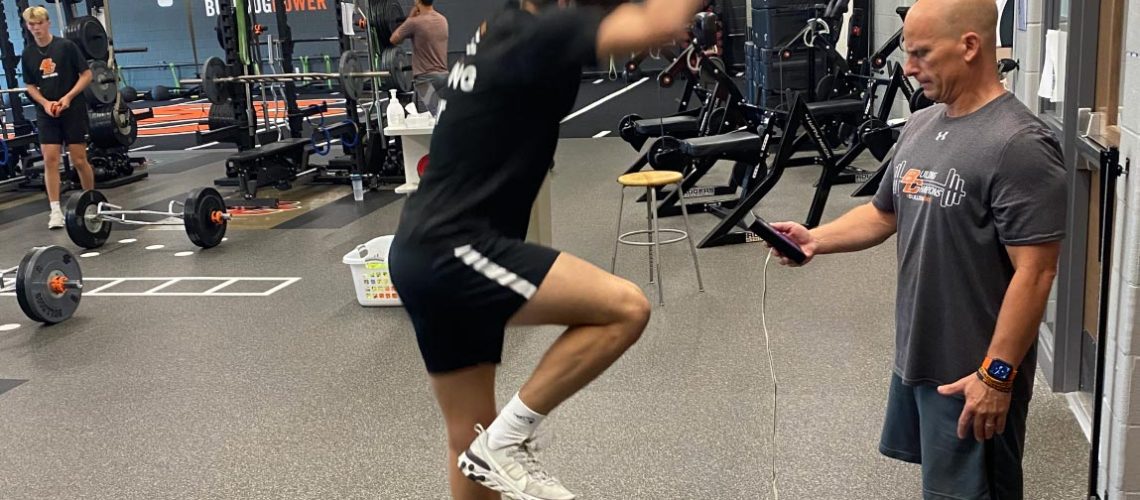Any coach or athlete understands there is always a risk of injury in any sport that we compete in. When those injuries occur, do we, as strength & conditioning coaches, have the tools to help these athletes expedite their Return to Play in a safe manner that assists the sports medicine staff?
As a veteran Certified Athletic Trainer (ATC) and Certified Strength & Conditioning Specialist (CSCS), I have had a lot of practice following Return to Play exercise protocols for the post-surgical athlete. This also applies to the athlete coming off a mild/moderate injury in any sport. Within the new NHSSCA HSSCC (Certification), there are a couple of chapters that take a deep dive into the responsibilities of the strength coach for injured athletes returning to play. For the purpose of this article, I’d like to highlight a couple of best practices to consider for the injured athlete.
First, and most importantly, DO NO HARM. Make sure that anything you do with the athlete is documented and also cleared by the athletic trainer, physical therapist or attending physician. I can speak from experience, as a sports medicine professional, that just because it seems logical to take the “next step” in progression of exercise, it doesn’t mean you should be taking that step!
I once had a post-op knee athlete who had a clearance note from the PT that approved the use of body weight “squats,” but never clarified the ROM. Well, this athlete had knee meniscus repair, and it was contraindicated to squat past 90 degrees at the knee from the surgeon. That small miscommunication or misunderstanding could have caused unnecessary additional damage to the repair if the athlete squatted to full ROM that early in the protocol, and may have set the athlete back weeks!
Secondly, the best thing you can do to help expedite the healing process is to keep the athlete training! It can be very frustrating to any coach to receive a note that restricts “all lifting” activities when the athlete is actually very capable of training other non-injured body parts.
One way to approach difficult conversations with athletes and medical professionals that are hesitant to keep training while the athlete is injured is to get them to understand that they may be 25% “injured” but they are 75% “healthy.” While training, we should be careful with the injured arm or leg, but can certainly train the other body parts as long as we aren’t causing additional irritation or pain. I feel that mentally, this philosophy can go a long way into building trust with your injured athletes, leading to great outcomes with Return to Play protocols.
In a researched phenomenon coined the Contralateral Approach to Exercise Rehab, Dr. Kim Christiansen stated: “One way to provide the stimulus of early exercising to an injured area while avoiding excessive irritation is by using contralateral exercise. This neurological phenomenon (also called “cross education” or “cross transfer“) has been identified for many years, yet is rarely used by clinicians treating an acute injury. While this procedure is particularly helpful in the treatment of shoulder and ankle, it can be used successfully for many areas of the body.” This approach is precisely what this article is all about.
In a study done by researchers in 1992, 20 adults had hamstring and quadriceps muscle groups tested prior to an eight-week protocol for a baseline. Ten adults did single leg strength training on one extremity, and 10 adults were a control group with no strength training. At the end of the eight weeks the control group saw no change in strength training to either leg, while the single-leg tested athletes showed increase in strength, power and endurance to BOTH extremities, even while only training one extremity at the time!
There are many modifications that strength coaches can utilize to train around injuries. With the different types of equipment, bars, machines and modalities nowadays, workouts for injured athletes don’t need to slow down and strength coaches don’t have to disrupt the exercise sessions for the group on any given day.
One example of a great modification we use with squat exercises for athletes with upper extremity injuries or back pain injuries is our Rogue Rhino belt squat machine. It allows us to get rid of axial load on the spine and keeps hands free. We can also use a safety squat bars with athletes that have shoulder, wrist or hand injuries. We use banded jumps and weight vests for those individuals to allow resistance against vertical power without holding or handling a barbell.
We all know that the best ability is availability, and you can’t win games if you’re in the training room hiding from training the “healthy” parts of the body. That is why it is so important to keep athletes on schedule in the weight room with the proper precautions and exercise modifications.
Coach Joe Chiaramonte is the District Strength & Conditioning Coordinator for Byron Center Public Schools in Byron Center, MI. Coach Chiaramonte is also an Athletic Trainer at Byron Center High School and a Licensed Medical First Responder for the State of MI.



